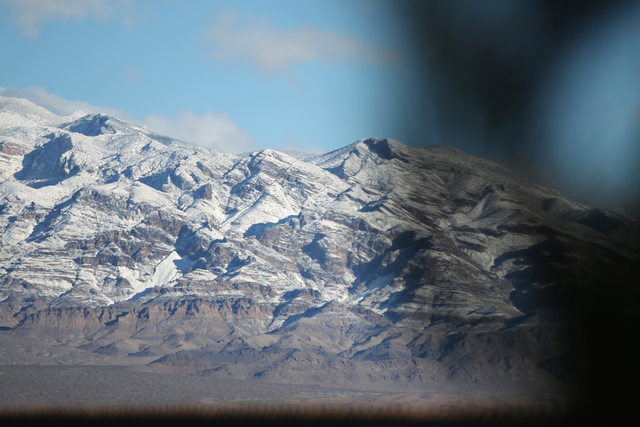Snow piling up on Mount Charleston poses little flood danger, experts say
The concern right now is avalanche, but what happens when all that snow melts on Mount Charleston?
Nothing terrible, probably.
Experts said late this week they do not expect any major flooding problems as a result of snowmelt in the Spring Mountains.
“I don’t want to say the risk is zero. I’d call it a low risk,” said Clay Morgan, a meteorologist with the National Weather Service in Las Vegas.
With at least two more months to go in the season, the range west of Las Vegas has already received 111 inches of snow, more than it usually gets all winter. There’s a great deal of water locked up in all that snow, Morgan said, but it won’t be released all at once.
Barring a sudden heat wave or major rain storm high in the Spring Mountains, the snow will melt off gradually, soaking into the soil and running downhill until some of it eventually makes its way into the valley’s groundwater aquifer or to Lake Mead.
“Rain on snow is absolutely the worst case,” Morgan said. “Thankfully, that’s not coming.”
He said the mountain received nearly double its average snowfall in 2005 — “that was the monster year,” he said — but it still didn’t see a major flood. 
One key difference this time around is the 28,000-acre scar left on Mount Charleston from the Carpenter 1 fire in 2013. This marks the first time the range has seen above-average snowfall since the blaze.
Wildfires significantly increase the potential for flooding by stripping away plants that otherwise absorb water and hold soil in place.
Just such a flood struck the Rainbow subdivision on Mount Charleston in July 2014, causing more than $2.2 million in damage and prompting construction of an earthen berm almost half a mile long to protect the community.
Morgan said such flooding is more of a summer monsoon phenomenon. It’s much less of a worry during spring runoff because snow generally melts too slowly to trigger a flash flood.
“You have to have heavy, fast, intense rain for (flooding) to be a concern. It has to come down in a hurry,” he said.
If the snow does melt rapidly, the valley’s storm water defenses are ready to capture it, said Erin Neff, spokeswoman for the Clark County Regional Flood Control District.
She said the Kyle Canyon detention basin in particular is large enough to handle almost anything Mount Charleston might send its way.
Once that melt water hits the flood control system, it will be channeled downstream and out to Lake Mead.
“We’re not at all concerned that what is up on the mountain will cause any major problems,” Neff said.
According to UNLV geoscience professor Matthew Lachniet, a significant portion of snowmelt from the east side of the Spring Mountains ends up in the Las Vegas Valley’s underground aquifer. That’s where the community gets about 10 percent of its water supply. The remaining 90 percent comes from Lake Mead.
Lachniet said the snow now piling up on Mount Charleston will undoubtedly deliver some water to both the valley’s aquifer and the depleted lake by way of the flood control system. It probably won’t be enough to make a huge impact on either of those vital community resources, he said, but “having a little extra water never hurts.”
Contact Henry Brean at hbrean@reviewjournal.com or 702-383-0350. Follow @RefriedBrean on Twitter.




























